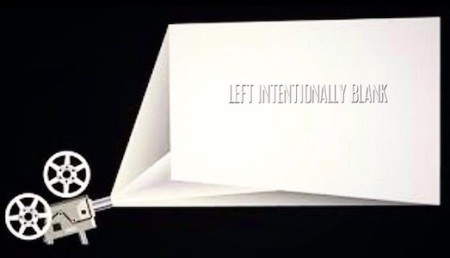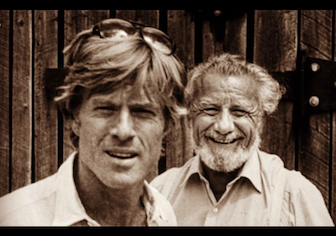
As final exams approached in my first year as a film student at the University of British Columbia, I condensed two semesters of class notes onto one page as a study tool.
(Okay… it was double-sided. And the letters were tiny. But it was still a single page.)
One side was dedicated to the purely technical details; the other focused on the artistic and interpretive aspects of visual storytelling. Everything was on the table for the exam.
The first word at the top of the ‘story’ page was theme. In the list of all the story terms – plot, inciting incident, climax, resolution, and so on – theme was the one that generated the most interesting discussions in class.
Understanding themes – primary, secondary and tertiary – is critical for a thorough script analysis and requires a commanding knowledge of the content, characters and overall action of the story. Identifying and stating the themes isn’t always easy or straightforward, but it’s essential for anyone hoping to take on a key creative role in the film industry.
I love script analysis. In my graduate directing class, I dedicate three entire lessons to various analysis strategies. When I work with filmmakers and students, theme is still at the top of my list. It’s surprising how many story questions can be answered, how creative choices can be improved, and how audience satisfaction can be enhanced when there is a clear understanding of the themes.
Frank Daniel, my teacher-in-absentia, offered excellent notes on the challenges of screenwriting. Here’s a transcript from his lecture discussion on theme:
“One of the most difficult terms to deal with — and to understand — is the term ‘theme.’
The theme — simply spoken — is the principal subject: the main aim why a story is being told. This specific purpose, eventually, becomes the resulting effect of the finished work and can be analytically deducted from it. It gives the whole its unity. It gives each part and each element its place and function.
But how should a writer apprehend it when he is beginning just to meditate over his future story? From what end should he approach this confusing matter when his story is barely emerging as a possibility? If you are writing a film story, think of your theme only as the final effect, of the resulting impact that the audience should feel when the picture is over. You are offering an experience – a visceral, emotional, almost physical excitation.
Tension and Release
That’s why the tension, its gradation, culmination and release is the ‘vehicle,’ the tool, and de facto form in which the theme materializes. It consists, therefore, from the realization of the dramatic situation. From the apprehension of whose story, whose predicament is going to be followed, displayed and participated in. From the aroused intent and the consequent empathy, followed by the resulting sympathy and continuous anticipation.
Full involvement in the main character’s conflict becomes a distressing uncertainty about the surmised development of the events and the gradual crystallization of the wish to see the fulfillment of the main character’s desire.
Ordeal and Craving
The sympathy with the protagonist’s ordeal and craving brings with it, simultaneously, the fear from the threatening destruction of this desire, scheming or dream. In other words, the theme becomes, in the story itself, the craving for the fulfillment, imperiled either by natural, social or psychological circumstances or, many times, by all three of them. The more specific and simultaneously humanly universal this protagonist’s craving gets, the easier it becomes to create the viewer’s sympathy.
But there can be a totally opposite case. Instead of a humanly positive desire for human fulfillment, a story can follow a depraved, accursed, appalling aspiration, evil coveting, anti-humane obsession, destructive or even self-destructive mania. The history of tragedy offers great examples of this type of ogre: Richard III, Macbeth, Medea…
The Audience’s Emotional Approval or Rejection
In essence, we see either the audience’s emotional approval, or rejection, abhorrence, and even repulsion, depending upon the nature of the dominant drive (spine) that carries the story from its genesis to its resolution.
If the drive of the main character is a desire for human fulfillment, from its lowest, modest forms to the most heroic ones, in other words, love in any of its appearances, the theme becomes the acceptance, and the approval of the main character’s objective and the emotional effect of the story — feeling joy, satisfaction, elation or sadness, anger, bitterness – depends on the outcome of the presented conflict.
If the drive, fixation, or fascination of the protagonist is any kind of destructive or self-destructive delusion, then the theme unfolds as a progressing disapprobation. It can take a form of horrified aversion, hatred or just derision and the final effect, again, depends on the outcome of the conflict: relief, anger, sadness, etc.
The Storyteller’s Position
The storyteller’s position, his philosophical moral stand, shows itself inevitably in the theme. There is always the dichotomy between what he or she sees as reality or delusion, creation or destruction — what’s presented as meaningful, and what’s shown as nonsensical, harmful or harmless.
From this realization it is easy to approach the basic structure of the cinematic or dramatic story: the protagonist craves for a humanly positive value. Othello — to take the most blatantly clear example — is love, giving oneself to the loved woman, trust, etc.
The Antagonist desires to destroy this value, i.e. to change love into jealousy and a feeling of disgust from female vileness. The story carries and contains us, necessarily, by the deception of the protagonist, of his temporary or lasting error.
It leads, consequently, to the obligatory moment of recognition, the horrifying realization that the deception has caused. If the scene of recognition precedes the ‘catastrophe’ (the tragic resolution), we have a happy ending. If it follow the catastrophic conclusion, then the end is obviously tragic.
Protagonists are almost always wrong. Their values are not clarified. The scene of recognition becomes obligatory and leads to self-recognition, self-knowledge.
It figures that for the strongest possible effect, it is much better when the viewer has a chance to realize that the protagonist is in error and when he expects, with suspense, the moment of recognition, we will have a chance to see other story patterns and realize how the specific tension in each one of them determines the structure of the story.
The Most Important Fact
The most important fact to keep in mind is that the theme is not a philosophical, political, moral, or any other ‘thesis,’ (or ‘premise’ as some people call it) but an emotional response – social, personal, or any other – a stand, an engagement of the whole human being for a certain human truth, displayed in a process of its affirmation in the conflict of the story.
One way of originating a story is to start asking – What is threatened? What’s being offended, exploited, smothered? What human values are being destroyed? What truth is getting silenced or smeared? What beautiful dreams are being thwarted, or ruined, or crushed? And how should we feel about it? Horrified? Sad? Appalled? Victorious? Triumphant?”
***








